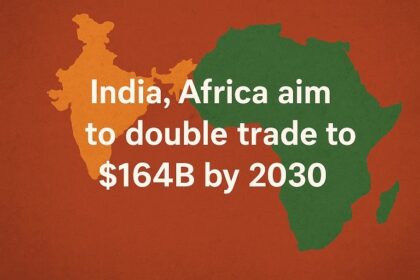India’s Forex Reserves Surge to $698 Billion: A Milestone in Economic Resilience
India’s foreign exchange (forex) reserves have reached a robust $698.26 billion as of September 5, 2025, marking a significant $4.03 billion increase from the previous week. This surge, announced by the Reserve Bank of India (RBI) on September 12, 2025, underscores the nation’s strengthening economic position amid global uncertainties. Driven primarily by a sharp rise in gold holdings, the reserves now provide a substantial buffer against external shocks, supporting the rupee’s stability and boosting investor confidence. As India navigates trade tensions and global market volatility, this milestone highlights the effectiveness of prudent monetary policies and foreign inflows. This comprehensive article delves into the details of the surge, recent developments, historical trends, economic impacts, future outlook, and more, offering a complete perspective on India’s forex journey.
Why India’s Forex Reserves Hitting $698 Billion Matters
Forex reserves, comprising foreign currency assets, gold, Special Drawing Rights (SDRs), and India’s reserve position in the International Monetary Fund (IMF), serve as a critical safeguard for the economy. They enable the RBI to intervene in forex markets to curb volatility, fund imports, and service external debts. At $698.26 billion, India’s reserves cover over 11 months of projected imports, well above the three-month adequacy threshold recommended by the IMF. This buildup reflects strong foreign portfolio investments, export growth, and a strategic shift toward gold diversification, positioning India as the fourth-largest holder of reserves globally after China, Japan, and Switzerland.
Breakdown of India’s Forex Reserves as of September 5, 2025
| Component | Amount (in $ Billion) | Weekly Change |
|---|---|---|
| Foreign Currency Assets | 584.47 | +0.54 |
| Gold Reserves | 90.299 | +3.53 |
| Special Drawing Rights | 18.742 | -0.033 |
| Reserve Position in IMF | 4.751 | +0.002 |
| Total Forex Reserves | 698.26 | +4.03 |
This table illustrates the gold reserves’ pivotal role in the overall surge, highlighting India’s growing preference for safe-haven assets.
Latest Events and News Surrounding the Forex Surge
RBI Data Release on September 12, 2025
The RBI’s weekly statistical supplement, released on September 12, 2025, confirmed the $4.03 billion jump to $698.26 billion for the week ended September 5. This marks the second consecutive weekly increase, following a $3.51 billion rise to $694.23 billion the prior week. The data release emphasized the valuation effects of non-US currencies like the euro, pound, and yen, which contributed to the foreign currency assets’ modest gain.
Gold Reserves Drive the Momentum
A standout feature was the $3.53 billion surge in gold reserves to $90.299 billion, reflecting the RBI’s ongoing diversification strategy away from US Treasury bills. This follows a trend where India’s gold holdings have nearly doubled since 2021, amid global central banks’ pivot to the yellow metal as a hedge against inflation and geopolitical risks.
Market and Analyst Reactions
Equity markets responded positively, with the Sensex gaining 150 points on September 12, buoyed by the reserves data and optimism around foreign inflows. Analysts from firms like Kotak Mahindra Bank noted that the reserves provide ample liquidity to counter any rupee depreciation pressures from US tariffs or oil price fluctuations. Social media buzz highlighted the reserves’ role in stabilizing the economy, with hashtags like #IndiaForexSurge trending on platforms.
India’s Forex Reserves Evolution
India’s forex reserves have grown dramatically from a mere $5.8 billion in 1991—when a balance-of-payments crisis nearly led to default—to the current $698 billion milestone. The liberalization reforms of 1991 marked the turning point, followed by steady accumulations through the 2000s via IT exports and remittances. Post-2013 taper tantrum, the RBI adopted a more aggressive buildup strategy, peaking at $704.89 billion in September 2024 before minor dips due to interventions. The 2025 surge aligns with a recovery pattern seen after global events like the COVID-19 pandemic, where reserves dipped to $570 billion in 2020 but rebounded strongly.
Timeline of Key Forex Milestones
| Year | Reserves Level ($ Billion) | Key Event |
|---|---|---|
| 1991 | 5.8 | Balance-of-payments crisis; IMF bailout. |
| 2004 | 113 | Surge from IT boom and FDI inflows. |
| 2013 | 304 | Peak before taper tantrum volatility. |
| 2020 | 570 (low) | COVID-19 impact; RBI interventions. |
| September 2024 | 704.89 (peak) | All-time high amid strong exports. |
| September 2025 | 698.26 | Gold-led recovery to near-peak levels. |
This progression showcases India’s transition from vulnerability to resilience in global finance.
Impacts of the $698 Billion Forex Milestone
Economic Stability and Rupee Support
The reserves bolster the rupee, which traded at around 83.50 against the dollar on September 12, 2025, by enabling RBI interventions to prevent sharp depreciations. This stability aids import-dependent sectors like oil and electronics, curbing inflation currently at 4.5%. The buffer also supports fiscal policies, allowing the government to fund infrastructure without excessive borrowing.
Investor Confidence and Capital Inflows
Strong reserves signal economic health, attracting foreign direct investment (FDI) projected at $80 billion for FY26. Foreign portfolio investments (FPIs) netted $1.7 billion in May 2025 alone, driven by equity market rallies. This influx could further elevate reserves, creating a virtuous cycle for stock markets and bond yields.
Global Standing and Trade Resilience
As the fourth-largest reserves holder, India gains leverage in international negotiations, particularly amid US tariffs affecting $87 billion in exports. The reserves mitigate risks from global oil prices, which India imports 85% of, ensuring energy security. Socially, they underpin remittances—$100 billion annually—supporting rural economies.
Potential Drawbacks
While beneficial, excessive reserves tie up capital that could fund domestic investments. The RBI’s gold shift, while prudent, exposes holdings to price volatility, as seen in 2022’s 10% dip.
Future Scopes: Projections and Strategies
Near-Term Outlook for 2025-2026
Analysts forecast reserves could reclaim the $700 billion mark by December 2025, driven by sustained FPI inflows and export growth to $450 billion. The RBI may continue gold accumulation, targeting 10% of reserves, to diversify from US assets amid de-dollarization trends.
Long-Term Vision to 2030
By 2030, reserves could exceed $1 trillion, aligning with India’s $10 trillion economy goal. Strategies include boosting services exports (IT, pharma) and remittance corridors. Integration with BRICS initiatives may enhance reserve management through local currency settlements, reducing dollar dependency.
Emerging Trends
- Digital and Green Reserves: Potential inclusion of crypto assets or green bonds in reserve baskets.
- Policy Enhancements: RBI’s forward guidance on interventions to maintain 10-11 months of import cover.
- Global Collaborations: Swap lines with central banks like the Fed for liquidity support.
Potential Scenarios for End-2025
- Optimistic: Reserves hit $710 billion with strong monsoons and FDI.
- Moderate: Stable at $700 billion amid balanced trade.
- Pessimistic: Dip to $680 billion if oil spikes or tariffs escalate.
Frequently Asked Questions (FAQs)
What caused the $4.03 billion surge in India’s forex reserves?
The increase was primarily due to a $3.53 billion rise in gold reserves to $90.299 billion, with minor gains in foreign currency assets, offset by a slight dip in SDRs.
How does India’s $698 billion compare globally?
India ranks fourth worldwide, behind China ($3.2 trillion), Japan ($1.3 trillion), and Switzerland ($850 billion), providing over 11 months of import cover.
What role do forex reserves play in the economy?
They stabilize the rupee, fund imports, service debts, and signal economic strength to investors.
Has India always had high reserves?
No; reserves were critically low at $5.8 billion in 1991, leading to reforms that enabled the current buildup.
Will reserves continue to grow?
Yes, projections indicate steady increases, potentially reaching $1 trillion by 2030, supported by exports and FDI.
How does gold diversification affect reserves?
It reduces reliance on US Treasuries, hedging against inflation, though it introduces commodity price risks.
India’s Forex Triumph: Building a Resilient Future
The surge to $698.26 billion in forex reserves exemplifies India’s economic maturity, offering a shield against global headwinds and fueling growth ambitions. As the RBI balances accumulation with strategic use, these reserves pave the way for a stable, prosperous trajectory, reinforcing India’s global financial stature.
Key Takeaways
- Record Surge: $4.03 billion weekly jump to $698.26 billion, gold-led.
- Economic Buffer: Covers 11+ months of imports, stabilizing rupee.
- Investor Boost: Attracts FDI, supports exports amid trade tensions.
- Future-Proof: On track for $1 trillion by 2030 with diversification.












